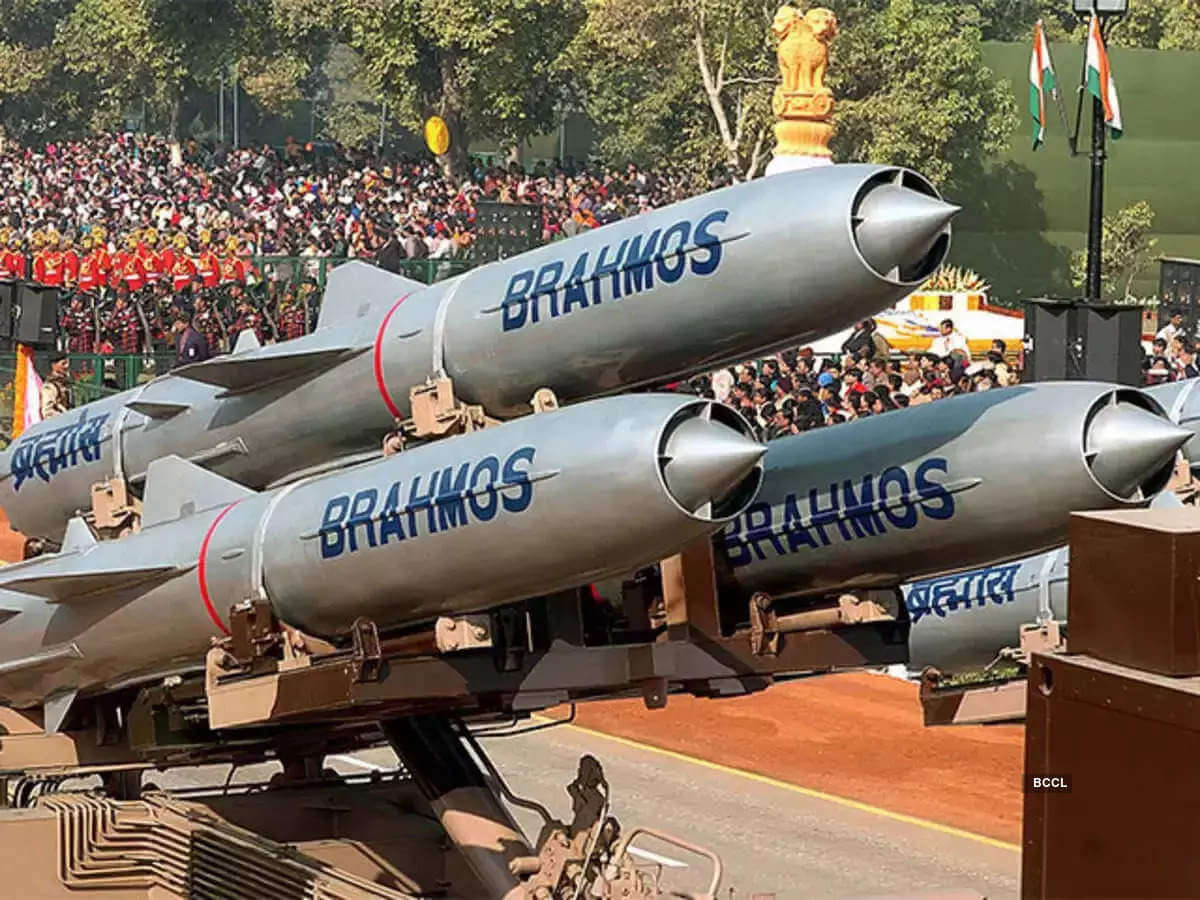BrahMos Aerospace, a joint venture by India and Russia to produce nuclear-capable supersonic surface-to-surface cruise missiles, said it aims to secure $5 billion worth of export orders by 2025, thereby single-handedly achieving Indian Prime Minister Narendra Modi’s target for the entire defence industry.
India’s Defence Research and Development Organisation owns 50.5% of the joint venture, while Russia’s NPO Mashinostroyeniya holds the remaining 49.5%.
Speaking at the Defence Expo 2022 meeting in Gandhinagar, BrahMos Chief Atul Rane revealed that Indian officials are already in talks with Vietnam, Malaysia, and Indonesia for new orders. India received a $375 million order for the BrahMos missiles from the Philippines earlier this year.
He noted that the development of BrahMos Next Generation missiles is well underway as well, with the first trial scheduled for mid-2024. Moscow and New Delhi are also looking to develop other missile variants to induct into India’s defence.
#WATCH | Gandhinagar: BrahMos made the first export deal with the Philippines at $375 million... Prime Minister Modi has given a target of $5 billion by 2025 to the country. I hope BrahMos themselves will be able to reach $5 billion by 2025: BrahMos Aerospace Chairman Atul D Rane pic.twitter.com/g46whaTcqO
— ANI (@ANI) October 18, 2022
The BrahMos is a surface-to-surface missile that can be launched from land and sea. It forms a crucial part of India’s military arsenal. While its range was initially set at 290 kilometres in compliance with the Missile Technology Control Regime, this was extended to 450-600 kilometres after India joined the alliance in 2016.
In March, India successfully test-fired the BrahMos missile in the Andaman and Nicobar islands with “pinpoint accuracy.” The missile also generated controversy after it was accidentally fired into Pakistani territory on 9 March.
Atul Rane’s announcement comes against the backdrop of a deal between India’s Ministry of Defence and BrahMos Aerospace in September to boost domestic production of weapon systems and ammunition. The agreement also mandated the acquisition of the BrahMos missile for Rs 1700 crore ($205.5 million) under the “Buy Indian category.”
The joint venture aims to expand India’s defence exports and deepen the defence partnership between India and Russia, despite concerns of Western backlash.
Aside from the BrahMos missiles, India has a license to indigenously manufacture the Russian MiG fighter planes and Su-30 jets. In April 2021, Russian Foreign Minister Sergei Lavrov said that the two countries are also discussing the prospect of producing “additional” Russian military equipment in India.
Moscow is New Delhi’s largest supplier of defence equipment, including its S-400 missile defence system.
Nice to meet Defense Minister @del_lorenzana of Philippines.
— Dr. S. Jaishankar (@DrSJaishankar) February 14, 2022
A good discussion on national security challenges and expanding defense cooperation. pic.twitter.com/njKvkkEB5y
However, although it has criticised India, the Biden administration has refused to invoke the Countering Americas Adversaries Through Sanctions Act (CAATSA) against India over its purchase of the S-400 from Russia, despite sanctioning Turkey over the purchase of the same equipment.
That being said, India has reduced its reliance on Russian weapons, with a 53% drop in Russian arms imports from 2016 to 2020. Simultaneously, its defence ties with the US have increased, with arms sales hitting $3.4 billion in 2020.
Defending India-Russia ties during his recent visit to Australia, External Affairs Minister S. Jaishankar said that India’s “substantial inventory” of Russian weapons is down to a variety of factors. He said that apart from the “merits of the weapon systems,” India has been compelled to turn to Russia for defence equipment because “Western countries did not supply weapons to India and in fact saw a military dictatorship next to us as the preferred partner.”
Furthermore, it emerged earlier this year that the Biden administration has been deliberating on a $500 million military aid package for India in a bid to reduce its reliance on Russian weapons. The package could reportedly include fighter jets, naval ships, and battle tanks, which would make India one of the largest beneficiaries of US military aid after Egypt and Israel.
In fact, US Defence Secretary Lloyd Austin has openly said that the US is ready to take Russia’s place.

